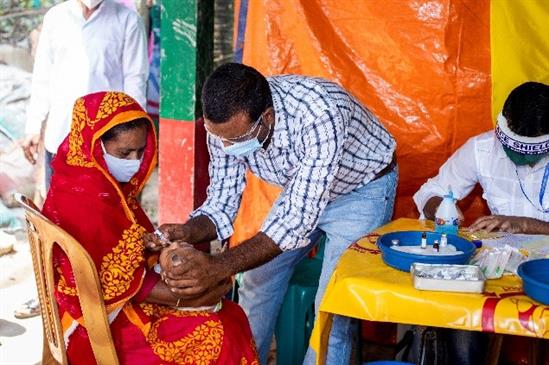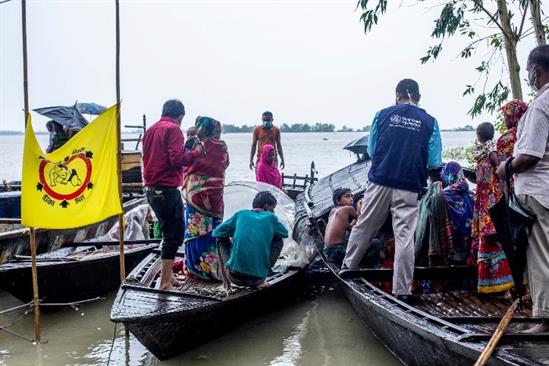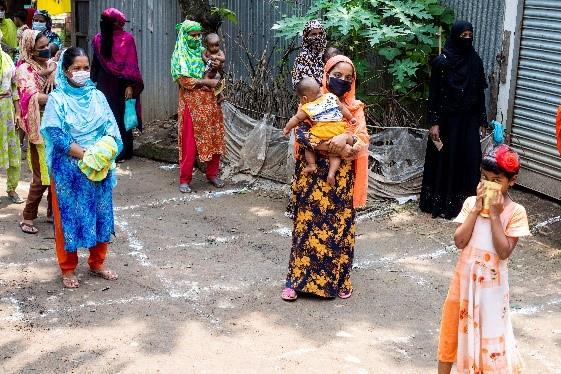Immunization rates that saw a sharp decline from April to May 2020 due to COVID-19 implications are getting back on track due to extra efforts initiated by the Government with WHO’s support.

Routine Immunization in Dhaka Division - Photo by WHO Bangladesh
According to service utilization data from the national Management Information System (MIS), the number of immunization sessions dropped by 18% in April 2020 and by 22% in May 2020. Furthermore routine immunization coverage for Penta third dose and Measles and Rubella (MR) first dose of vaccine was almost 50% lower in April 2020 as compared to the same period in 2019.
According to DHIS2 data, country wide over 380,000 children missed their first dose of MR vaccine and over 360,000 children missed the 3rd dose of pentavalent vaccine between January and May 2020. And this picture is even worse in City Corporations.
“COVID-19 has resulted in irregular service provision due to key immunization staff being allocated to COVID-19 related activities. Additionally, limitation in population movement due to lock down restrictions and fear of COVID contributed also to reduction in demand for vaccination.” says Dr Rajendra Bohara, Immunization and Vaccine Development Team Leader, WHO Bangladesh.
Moreover, severe monsoon flooding has been affecting many parts of the country, further hampering the efforts to maintain routine immunization services.

Routine immunization in floods affected area, Rangpur Division - Photo by WHO Bangladesh
To avert further setbacks in routine immunization, the Government of Bangladesh in consultation with WHO and UNICEF has issued national guidelines on the continuation of immunization during COVID-19. The guidelines include recommendations for line listing children who have missed or not completed their vaccinations and for strengthening immunization monitoring tools e.g. the dashboard, vaccine alerts. These measures will build on the high demand for vaccination that still exists in the country despite the current challenges.
To further reduce the risk of COVID-19 infection during vaccination, as of 15 August, WHO trained over 6,200 immunization health workers in Infection and Prevention Control and worked with Government for establishing and implementing distancing protocols during vaccination activities.

Physical distancing for routine immunization - Photo by WHO Bangladesh
“Vaccination is one of the essential health services that are getting back on track fast. It is encouraging to see that, despite natural disasters and restrictions due to COVID-19, the demand for vaccination is very high and the Immunization Program in Bangladesh is a very resilient one that can adapt to and overcome severe challenges.” added Dr Bohara.
WHO is supporting the GoB to fully resume routine immunization activities to regain the historically high immunization coverage lost due to COVID-19 and to further improve vaccination rates for achieving the MR elimination goal.
